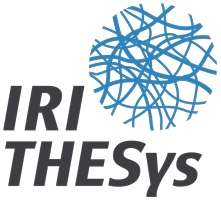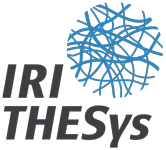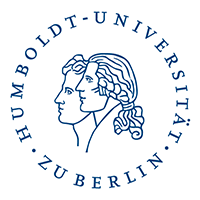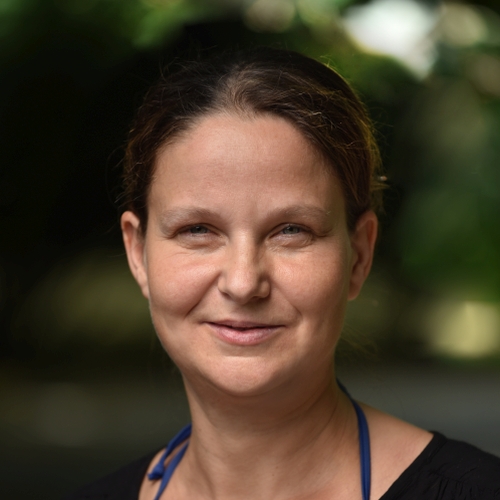Member
Ina Säumel holds an MSc in Geography, an MSc in Biology and a PhD in Ecology. She works as an assistant professor and began leading the research group on Multifunctional Landscapes in 2014 at TU Berlin, shifting in 2018 to the Integrative Research Institute on Transformations of Human-Environment Systems (IRI THESys) at Humboldt-Universität zu Berlin.
Ina conducts and supervises research on urban and landscape ecology, land use change, sustainable use of resources and environmental pollution with a special focus on developing concepts for multifunctional, biodiversity-friendly and healthy landscapes. She has received funding from DFG, BMBF, DAAD, Deutscher Stifterverband and the EU, among others. She has published over 80 peer-reviewed papers and supervised over 90 BA and MA theses and 9 PhD theses.
Ina currently leads the following research projects: “EdiCitNet: Edible Cities Network – Integrating Edible City Solutions for social, resilient and sustainably productive cities” (EU H2020), “RuralFutures – Strategies towards multifunctional, biodiverse and sustainable productive landscapes in silvi- and agricultural modified grasslands in Uruguay” (German Federal Ministry of Education and Research, BMBF) and “HealthyLiving – Strategical planning of residential greenery for a future-proof city“ (Berg Stiftung, Deutscher Stifterverband). In 2021, she became a Brain City Berlin Ambassador.
Research Interests
- Impacts, mechanisms and tipping points of land use changes
- Concepts for sustainably productive, multifunctional, biodiversity-friendlly and healthy landscapes
- Empowering transdisciplinary and inclusive communities of knowledge and practice
Projects
EcoFABULAnds – Innovating for future-proof agroecological, biodiverse, and sustainably productive landscapes of Europe
HEBEDI – Healthy and biodiverse Edible Cities
EdiCitNet: Edible Cities Network – Integrating Edible City Solutions for social, resilient and sustainably productive cities
RuralFutures – Strategies towards multifunctional, biodiverse and sustainable productive landscapes in silvi- and agricultural modified grasslands in Uruguay
HealthyLiving – Strategical planning of residential greenery for a future-proof city
Publications
Selected Peer-Reviewed Publications (>60 publications since PhD 2007)
- Gerner, I.R., Zerbe, St., Säumel, I. (2025) Voices around the South Tyrolean Herbal Pharmacy – Exploring the stakeholder landscape and perspectives on medicinal plants as culturally salient species. Journal of Ethnobiology (accepted).
- Olbertz, M., Wilk, B., Mahmoud, I., Saporito, E., & Säumel, I. (2024). Co-design of NBS with post-industrial communities. In Barbero, S.; Timpe, A. (Eds.), Nature-based solutions for urban renewal in post-industrial cities (pp. 121–149). Routledge. https://doi.org/10.4324/9781003474869-8
- Salgado, M. A. H., Säumel, I., & Tarelho, L. A. C. (2024). Post-Extractivism and Bioeconomy: An Experimental Analysis of Combustion and Pyrolysis Processes as Alternatives to Add Value to Agro-Residues (Coffee Husks) Generated in Farmer Cooperatives of the Ecuadorian Amazon. Resources, 13(10), 142. https://doi.org/10.3390/resources13100142
- Säumel, I., Ramírez, L. Santolin, J. Pintado, K. (2023) Disentangling diversity patterns in Uruguayan grasslands: climatic seasonality, novel land uses and landscape context drive species richness (accepted, Journal of Conservation Science and Practice, doi: 10.1111/csp2.12990)
- Säumel, I., Ramírez, L., Tietjen, S., Barra, M., Zagal, E. (2023) Back to the future – Conservative grassland management for Anthropocene soils in the changed landscapes of Uruguay? (accepted, Soil: 10.5194/egusphere-2022-335)
- Ramírez L., Säumel, I. (2023) Moderation and mediation of land use change! Inter-play between β-diversity and landscape structures in agri- and silvicultural modified grasslands of South America. Land Degradation & Development 1–13. doi 10.1002/ldr.4778.
- Mohr-Stockinger, S., Sanft, S.J., Büttner, F., Butenschön, S., Rennert, R., Säumel, I. (2023) Awakening the sleeping giant of urban green in times of crisis – Coverage, co-creation and practical guidelines for optimizing biodiversity-friendly and health-promoting residential greenery. Frontiers in Public Health. doi: 10.3389/fpubh.2023.1175605.
- Zerbe, S., Petelka, J., Bonari, G., Wilhalm, Th., Säumel, I. (2023) Traditionelle Heil-pflanzen als kulturelle Schlüsselarten für Naturschutz und Ökosystemrenaturierung. Naturschutz und Landschaftsplanung, 55 (05). doi: 10.1399/NuL.2023.05.02.
- Pueyo-Ros, J., Comas, J., Säumel, I., Castellar, J.A.C., Popartan, L.A., Acuna, V., Corominas, L. (2023) Design of a serious game for participatory planning of nature-based solutions: the experience of the Edible City Game. Nature-based Solutions. Elsevier. (accepted)
- Scherrer, M.M., Zerbe, St., Petelka, J., Säumel, I. (2023) Understanding old herbal secrets: the renaissance of traditional medicinal plants beyond the twenty classic species? Front. Pharmacol. Sec. Ethnopharmacol. 14: 10.3389. doi: 10.3389/fphar.2023.1141044.
- Säumel, I., Alvarez, J., Ramírez, L.R., Barra, M. (2023) Quo vadis Patria Gaucha? Uruguayan Pathways of Land Use Change. Front. Sustain. Food Syst. 7:1083938. doi: 10.3389/fsufs.2023.1083938.
- Zerbe, S., Petelka, J.; Bonari, G.; Wilhalm, Th., Säumel, I. (2023) Traditionelle Heilpflanzen als Kulturelle Schlüsselarten für Naturschutz und Ökosystemrenaturierung. Naturschutz und Landschaftsplanung (in press).
- Säumel, I., Butenschön, S., Kreibig N. (2023) Gardens of life: Multifunctionality and ecosystem services of urban cemeteries in central Europe and beyond—Historical, structural, planning, nature and heritage conservation aspects. Front. Environ. Sci. 10:1077565. doi: 10.3389/fenvs.2022.1077565.
- Ramirez, L., Säumel, (2023) There is glory in prevention! Regional spatio-temporal agrochemical runoff into aquatic ecosystems and its potential mitigation using multifunctional buffers. Journal of Hydrology, Regional Studies, 45, 101283. doi: 10.1016/j.ejrh.2022.101283.
- Plassnig, S.N.; Pettit, M.; Reichborn-Kjennerud, K.; Säumel, I. (2022) Successful scaling of Edible City Solutions to promote food citizenship and sustainability in food system transitions. Front. Sustain. Cities 4: 1032836. doi: 10.3389/frsc.2022.1032836.
- ElZein, Z.; Abdou, A.; Säumel, I.(2022) Lessons learned from water-scarce cities: Proposed policies toward an integrated urban water management in Egypt. Front. Water 4:981261. doi: 10.3389/frwa.2022.981261.
- Petelka, J.; Bonari, G.; Säumel, I.; Plagg, B.; Zerbe, S. (2022) Conservation with local people: medicinal plants as Cultural Keystone Species in the Southern Alps. Ecology & Society. doi: 10.5751/ES-13510-270414.
- Heredia Salgado, M.A.; Coba, S.J.A.; Cianferoni A.; Säumel, I.; Tarelho L.A.C. (2022) Conversion of quinoa and lupin agro-residues into biochar in the Andes: An experimental study in a pilot-scale auger-type reactor. Front. Bioeng. Biotechnol. 10:1087933. doi: 10.3389/fbioe.2022.1087933.
- Säumel, I.; Reddy, S.; Schlecht, T.M.; Wachtel, T. (2022) How to feed the cities? Co-creating inclusive, healthy and sustainable City Region Food Systems. Front. Sustain. Food Syst. – Urban Agriculture. doi: 10.3389/fsufs.2022.909899.
- Säumel, I.; Sanft, S. (2022) Crisis mediated new discoveries, claims and encounters: Changing use and perception of residential greenery in multistory housing in Berlin, Germany. Urban Forestry & Urban Greening. doi: 10.1016/j.ufug.2022.127622.
- Säumel,; Ramirez, L. (2022) Novel land uses shape metacommunity structures in neighbouring native forests: dataset across Uruguay. Data in Brief. doi: 10.1016/j.dib.2022.108267.
- Manderscheid, M.; Fiala, V.; Edwards, F.; Freyer, B.; Säumel, I. (2022) Let’s do it online?! Challenges and lessons for inclusive virtual participation. Front. Sustain. Food Syst. – Social Movements, Institutions and Governance. doi: 10.3389/fsufs.2022.732943.
- Pozo, P.; Säumel, I. (2022) Nurse species facilitate dry forests persistence in agricultural landscapes in Uruguay. Journal of Vegetation Science. doi: 10.1111/jvs.13127.
- Ramírez, L.R.;Säumel, I. (2022) Native forest metacommunity structures in Uruguay shaped by novel land-use types in their surroundings. Ecology and Evolution, 12, e8700. doi: 10.1002/ece3.8700.
- Säumel, I.; Ramírez, L.R. (2021) Woody species diversity and land use change legacy: dataset across Uruguay. Data in Brief. doi: 1016/j.dib.2021.107545.
- Ramírez, L.R.;Säumel, I. (2021) Beyond the boundaries: Do spatio-temporal trajectories of land-use change and cross boundary effects shape the diversity of woody species in Uruguayan native forests? Agriculture, Ecosystems & Environment. doi: 1016/j.agee.2021.107646.
- Wilk, B.;Säumel, I.; Rizzi, D. (2021) Collaborative Governance Arrangements for Co-creation of NBS, in Croci, E. and Lucchitta, B. (Ed.) Nature-Based Solutions for More Sustainable Cities – A Framework Approach for Planning and Evaluation, Emerald Publishing Limited, Bingley, pp. 125-149. doi: 10.1108/978-1-80043-636-720211012.
- Schmid, H.L.;Säumel, I. (2021) Outlook and Insights: Perception of residential greenery in multistorey housing estates in Berlin, Germany. Urban Forestry & Urban Greening. doi: 10.1016/j.ufug.2021.127231.
- Castellar J.A.C.; Popartan, L.A.; Pueyo-Ros, J.; Atanasova, N.; Langergraber, G.;Säumel, I.; Corominas, L.; Joaquim Comas, J.; Acuna, V. (2021) Nature-based solutions in the urban context: terminology, classification and scoring for urban challenges and ecosystem services. Science of The Total Environment, 779, 146237. doi: 10.1016/j.scitotenv.2021.146237
- Pille, L.;Säumel, I. The water-sensitive city meets biodiversity: habitat services of rain water management measures in highly urbanized landscapes. Ecology and Society 26(2):23. doi: 10.5751/ES-12386-260223.
- Säumel, I.; Hogrefe, J.; Battisti, L.; Wachtel, T.; Larcher, F. (2021) The healthy green living room at one’s doorstep? Use and perception of residential greenery in Berlin, Germany. Urban Forestry & Urban Greening. 58, 126949. doi:1016/j.ufug.2020.126949
- Heredia Salgado, M.A.;Säumel, I.; Cianferoni, A.; Tarelho, L.A.C. (2021) Potential for Farmers’ Cooperatives to Convert Coffee Husks into Biochar and Promote the Bioeconomy in the North Ecuadorian Amazon. Appl. Sci. 2021, 11, 4747. doi: 10.3390/app11114747.
- Petelka, J.; Plagg, B.;Säumel, I.; Zerbe, S. (2020) Traditional medicinal plants in South Tyrol (northern Italy, southern Alps): biodiversity and use. Journal of Ethnobiology and Ethnomedicine 16:47. doi: 1186/s13002-020-00419-8
- Säumel I., Herrera R., Barcia L., Barra, M. (2017) Bridging the gap between Environmental and Science Education: The ‘Student Science Approach’. In ‘Nachhaltigkeitswissenschaften und die Suche nach neuen Wissensordnungen (Hrsg. Pfister Th. in “Nachhaltigkeitswissenschaften und die Suche nach neuen Wissensordnungen” Metropolis Verlag)
- Battisti, L.; Pille, L.; Wachtel, T.; Larcher, F.; Säumel, I. (2019) Residential Greenery: State of the Art and Health-Related Ecosystem Services and Disservices in the City of Berlin. Sustainability 2019, 11, 1815. doi: 10.3390/su11061815 (Special Issue The Future of Sustainable Communities: Planning, Design and Implementation)
- Säumel, I.; Reddy, S. E.; Wachtel, T. (2019) Edible City Solutions — One Step Further to Foster Social Resilience through Enhanced Socio-Cultural Ecosystem Services in Cities. Sustainability 2019, 11(4), 972. doi: 3390/su11040972 (Cover story of the Special Issue Sustainable Urban Agriculture)
- Scharf, N.; Wachtel, T.; Reddy, S.E.; Säumel, I. (2019) Urban Commons for the Edible City—First Insights for Future Sustainable Urban Food Systems from Berlin, Germany. Sustainability 2019, 11, 966. doi: 3390/su11040966.
- Pozo, P.; Säumel I. (2018) How to Bloom the Green Desert: Eucalyptus Plantations and Native Forests in Uruguay beyond Black and White Perspectives in Forests 2018, 9(10), 614. doi: 3390/f9100614.
- Säumel I.; Butenschön S. (2018) HealthyLiving: Strategie und Planungsinstrument für gesundheitsförderndes Wohnumfeldgrün in der Stadt der Zukunft. Edition Nachhaltige Gesundheit in Stadt und Region / Sustainable Urban & Regional Health Bd.1: „Stadt der Zukunft – Gesund und nachhaltig“ Hg.: Fehr, Hornberg, doi: 10.14512/9783962385064
- Huber B., Hausleiter A., Dinies M., Christopher J., Säumel I.; Pham H. (2018) Tayma, Saudi-Arabien. Interdisziplinäre Untersuchungen von Räuchergefäßen zur Rekonstruktion antiker Gerüche. Die Arbeiten der Jahr 2016 bis 2018. I DAI publications. doi: 10.34780/da92-aa7d.
- Matzinger, Schmidt, Strehl, Nickel, Pallasch, Kaiser, Möller, Lessmann, von Tils, Säumel, Winkler, Heinzmann, Reichmann, Rehfeld-Klein, Rouault (2017) Integrated planning of urban stormwater management – Introduction to the KURAS-approach from Berlin, Germany, ICUD Special Issue.
- Csizmadia D., Säumel I., Pille L., Szijagyi K., Balogh P.I. (2017) Water sensitive design potentials in Paris, Berlin, and Budapest revisited, Journal Technical Transaction, Environmental Engineering. doi: 10.4467/2353737XCT.17.009.6106.
- Pille L.; Säumel I. (2017): Only cooling and saving water? The effects of rainwater management measures on biodiversity: a meta-analysis, Acta Horticulturae. doi: 10.17660/ActaHortic.2017.1189.110.
- Csizmadia D., Szijagyi K., Balogh P.I., Säumel I. (2017) More than Green: Implementation of multifunctional blue-green infrastructure in residential areas of European Cities, Acta Horticulturae, doi: 10.17660/ActaHortic.2017.1189.110
- Säumel, I., Draheim, Th.; Endlicher, W. & Langner, M. (2016) Stadtnatur fördert saubere Luft. In Ökosystemleistungen in der Stadt, Naturkapital Deutschland – TEEB.de. 71-79. https://www.ufz.de/export/data/global/190508_TEEB_DE_Stadtbericht_Langfassung.pdf
- Säumel, I., Weber, F., Kowarik, I. (2016) Toward livable and healthy urban streets: roadside vegetation provides ecosystem services where people live and move. Environmental Science and Policy. doi: 10.1016/j.envsci.2015.11.012.
- Schlecht, M.T. & Säumel, I. (2015) Wild growing mushrooms for the Edible City? Cadmium and lead content in edible mushrooms harvested within the urban agglomeration of Berlin, Germany. Environmental Pollution 204:298-305. doi: 10.1016/j.envpol.2015.05.018
- Weber, F., Kowarik, I.,Säumel, I. (2014) A walk on the wild side: perceptions of roadside vegetation beyond trees. Urban Forestry and Urban Greening 13, 205-212. doi: 10.1016/j.ufug.2013.10.010.
- von Hoffen, L.P.;Säumel, I. (2014) Orchards for edible cities: Cadmium and lead content in nuts, berries, pome and stone fruits harvested within the inner city neighbourhoods in Berlin, Germany. Ecotoxicology and Environmental Safety, 101: 233-239. doi: 10.1016/j.ecoenv.2013.11.023.
- Weber, F., Kowarik, I.,Säumel, I. (2014) Herbaceous plants as filters: Immobilization of particulates along urban street corridors. Environmental Pollution 186: 234–240. 10.1016/j.envpol.2013.12.011.
- Säumel, I., Kowarik,, (2013) Propagule morphology and river characteristics shape secondary water dispersal in tree species. – Plant Ecology 214: 1257-1272. doi: 10.1007/s11258-013-0249-z.
- Säumel, I. (2013) Wie gesund ist die „Essbare Stadt“? Schwermetalle in Stadtgemüse und Stadtobst, Forum der Geoökologie 24:20-24.
- Kowarik, I. & Säumel, I. (2013) Ailanthus altissima (Mill.) Swingle. In Enzyklopädie der Holzgewächse. Handbuch und Atlas der Dendrologie. Roloff, Andreas et al. (eds.), Wiley-VCH Weinheim.
- Säumel, I., Kotsyuk, I. Hölscher M., Lenkereit C., Weber, F., Kowarik I. (2012) How healthy is urban horticulture in high traffic areas? Trace metal concentration in vegetable crops from plantings within Inner city neighbourhoods in Berlin, Germany. Environmental Pollution. 165:124-132. doi: 10.1016/j.envpol.2012.02.019.
- Säumel, I., Ziche, D., Yu, R., Kowarik, I., Overdieck, D. (2011) Grazing as driver for Populus euphratica woodland degradation in the semi-arid Aibi Hu Region, northwestern China. Journal of Arid Environments 75: 265-269. doi: 10.1016/j.jaridenv.2010.10.013.
- Butenschön, S.; Säumel, I. (2011) Between cultural and ecological processes: historical plant use in communal parks in Berlin, Germany. Journal of Landscape Architecture (JoLA), 6:1, 54-67. doi: 10.1080/18626033.2011.9723447.
- Kowarik, I., Fischer, L.K., Säumel, I., von der Lippe, M., Weber, F., Westermann, J.R. (2011) Plants in urban settings: from patterns to mechanisms and ecosystem services. In: Endlicher, W. et al. (Eds.): Perspectives of Urban Ecology. Ecosystems and Interactions between Humans and Nature in the Metropolis of Berlin. Springer, pp. 135-166. doi: 10.1007/978-3-642-17731-6_5.
- Säumel, I., Kowarik, I. (2010) Urban rivers as dispersal corridors for primarily wind-dispersed invasive tree species. Landscape and Urban Planning 94: 244-249. doi: 10.1016/j.landurbplan.2009.10.009.
- Säumel, I., Kowarik, I. & Butenschön, S. (2010) Green traces from past to future: the interplay of culture and ecological processes in European historical parks. Acta Horticulturae 881: 933-938. doi: 10.17660/ActaHortic.2010.881.156.
- Kowarik, I., Säumel, I. (2008) Water dispersal as an additional pathway to invasions by the primarily wind-dispersed tree Ailanthus altissima. Plant Ecology 198: 241-252. doi: 10.1007/s11258-008-9398-x-.
- Kowarik, I., Säumel, I. (2007) Biological Flora of Central Europe: Ailanthus altissima (Mill.) Swingle. Perspectives in Plant Ecology, Evolution and Systematics, 8(4): 207-237. doi: 10.1016/j.ppees.2007.03.002.
- Säumel, I., Kowarik, I. (2007) Closing the gap! How local actors respond to climate change processes in urban landscapes. L+U S20: 533-536.
- von der Lippe, M., Säumel, I., Kowarik, I. (2005) Cities as drivers of biological invasions. The role of climate changes and traffic. Die Erde 136 (2): 123-143.



